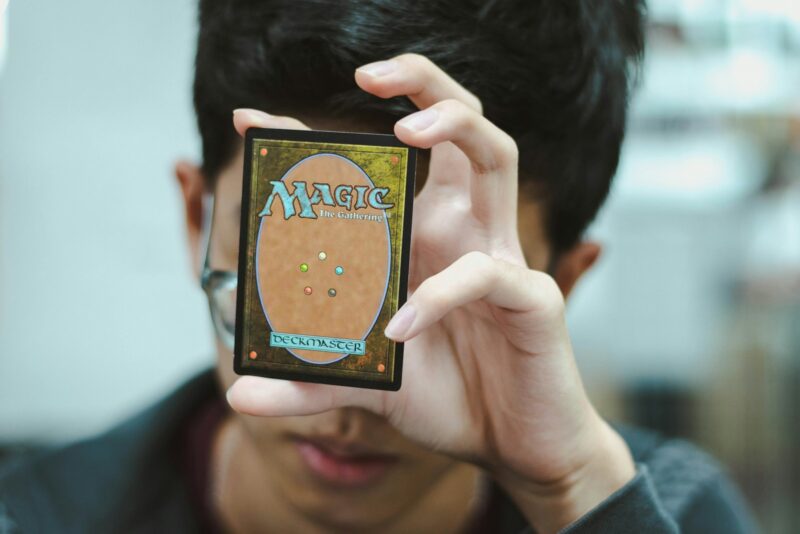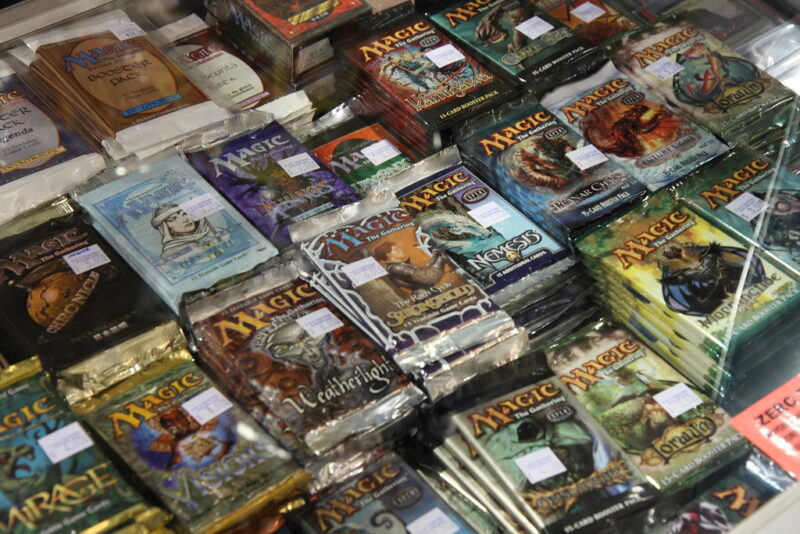If you are about to start playing Magic: The Gathering by Axion Now Events, or you want some tips and tricks to help you get the best deck, look no further. Here, we have crafted a guide to follow to ensure that your deck is able to support itself and you are able to utilise the cards in it to their best effect. From beginners to more seasoned pros, it’s always a good idea to refresh deck building fundamentals, and work out how they interlink with the strategies you want to follow. So let’s get started.
Fundamentals of deck building:
The building blocks
Each and every MTG deck has two main categories of cards.
The first is land cards. These generate your mana, which provides you with the energy you need to summon creatures and cast spells. Then we have everything else, which includes Planeswalkers, Artifacts, spells, creatures and enchantments. These are the tools that you will employ to battle your opponent.
Keep to the rules
If you are playing competitively, Magic: The Gathering has various different formats. Each format has specific rules about how many cards you are allowed in your deck, and what cards you can use in it. Beginners are typically found in standard format games, as there is a lower cost for entry and it is more accessible to those with less experience.
Creating a strategy
There are various ways in which you can choose to play the game. For example, aggro is a strategy to use if you want to overwhelm opponents with aggressive, fast spells and creatures.
On the other hand, a control strategy allows you to manipulate the game by disrupting your opponent’s strategies. The aim is to outlast of them.
For mid range strategists, balance needs to be struck between control and aggression. There are specific cards that excel in mid range gaming.
Alternatively, you may choose to play with a combination strategy which allows you to assemble different combinations of cards for a quick victory.
Choosing colours
Once you have decided on your strategy, take a look at what card colour lends itself best to your personality and play style. For example, blue is the colour that lends itself best to a controlling strategy, while red is excellent for those who want to play aggro.
Building your deck
There are certain things that you should keep in mind when building an MTG deck. First of all, lands must make up at the very least 30% of your deck, while the ideal amount (according to many players is 40%). If you have too many land cards, you will not be able to see as much action in the game, but if you have too few, you’ll struggle to cast any spells.
You will also need to learn which creatures and spells go best with your chosen colours and strategy. For example, if you’re working on a control strategy, counter spells and removal cards can be very useful. If you are playing aggro, burn spells and low-cost creatures will likely form the basis of your deck.
Don’t forget your mana
When you are building your deck, do not forget that your mana curve needs to be well balanced. This will make sure that you are able to play cards throughout the course of the game. Make sure to distribute the costs evenly, but emphasise the costs that go with your strategy. For example, you’ll likely want a lower cost for aggro strategies and higher for control.
Tips for beginners
If all this sounds a little too complicated, then taking it back to basics is a good way to start. For example, you can always begin with one colour in your deck. This will make it much easier for you to understand how the cards interact with each other and it can simplify your mana base too.
In addition to this, it’s worth knowing you can include up to 4 copies of any card but basic lands in your deck. This can help while you’re just getting started and getting to know your cards. However, it’s important not to max out each card, as it may be essential to your strategy.
Finally, make sure to test your deck and see what works and what doesn’t. That way you can adjust your deck accordingly.
Experimenting, trying new things and having fun is all part of MTG play. Your journey as a deck builder may see you hit a few bumps, but keep at it and you will soon see your abilities improve.


